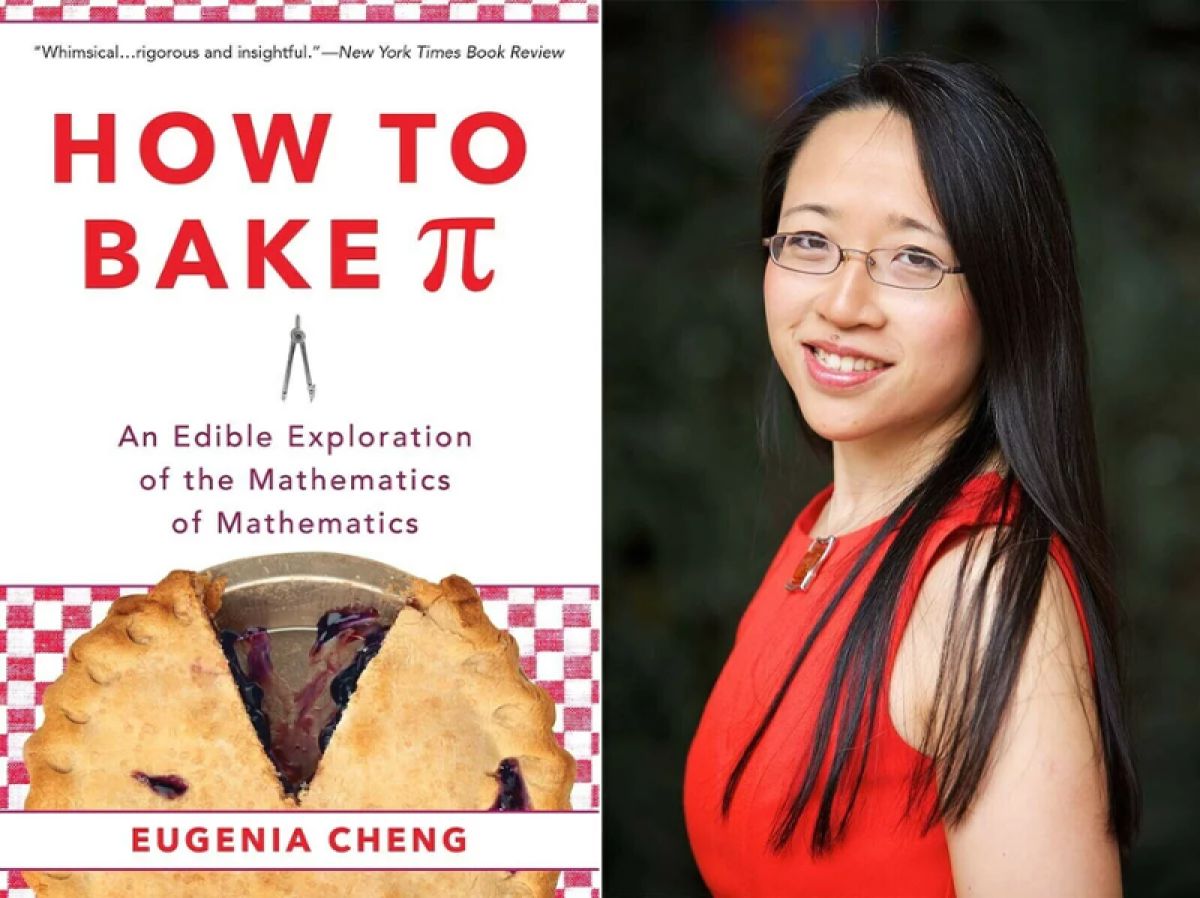
Eugenia Cheng is a mathematician and author of the book How to Bake Pi: An Edible Exploration of the Mathematics of Mathematics. Throughout the book, she uses baking as a vehicle for better understanding mathematics concepts. (Basic Books)
This March 14, Short Wave is celebrating π ... and pie!
We do that with the help of mathematician Eugenia Cheng, Scientist In Residence at the School of the Art Institute of Chicago and author of the book How to Bake Pi.
This episode: The mathematical magic embedded in baking — and we don't mean the numbers or the measurements.
Making math fun and relatable to the masses is a lifelong ambition for Eugenia. To date, she's the author of seven popular math books, including two children's books on math.
"I think that we should take any opportunity we can to portray math in a way that is fun to people," she says. "Just associating math with fun instead of with trauma is a good start."
Eugenia's start with mathematics was joyful and came early in life. See, since she was a child, baking and math were linked. As a little Eugenia learned from her mother that baking, like pure math, isn't just about the ingredients — it's about the process.
Take for example the first recipe in How to Bake Pi. It's a guide for making clotted cream, the fluffy staple of British tea time.
Clotted Cream
Ingredients
Cream
Method
- Pour the cream into a rice cooker.
- Leave it on the "keep warm" setting with the lid slightly open, for about 8 hours.
- Cool it in the fridge for about 8 hours.
- Scoop the top part off: that's the clotted cream.
That's it. One ingredient, four steps. It's the method, or recipe instructions, that turns just cream into unctuous clotted cream.
Eugenia loves this recipe because, yes, it has an ingredient — but really, it's all about the process. She loves pure math for the same reason. "And just as a recipe would be a bit useless if it omitted the method, we can't understand what math is unless we talk about the way it is done, not just the things it studies," she writes in her book.
Across each chapter, Eugenia uses a recipe as a launching point for math. Take chapter two.
Mayonnaise or Hollandaise Sauce
Ingredients
2 egg yolks
1.5 cups olive oil
seasoning
Method
- Whisk the egg yolks and seasoning using a hand whisk or immersion blender.
- Drip the olive oil in very slowly while continuing to whisk.
For Hollandaise sauce, use 0.5 cup melted butter instead of the olive oil.
The recipe is a playful starting point for discussing the process of abstraction — looking for underlying similarities between items like structures, patterns or properties. Mayonnaise and hollandaise are two different sauces with slightly different ingredients, but more abstractly, the process of making them is the same.
Through this and other playful examples, Eugenia brings mathematics home and makes them shine with (mostly) real life use cases.
"I did not always love school math, but I was very lucky because my mother is mathematical. And so she showed me the true essence of math at home, so that when I was bored by having to do timetables and answer questions at school, I knew that there was more to math than that," she remembers. "I held out that hope and that belief all the way through school until the very end of school, when it got interesting again — and then university when it finally got really interesting — and then finally research."
Eugenia's been on Short Wave before! To hear more, check out our episode, A Mathematician's Manifesto For Rethinking Gender.
Curious about other math magic? Email us at shortwave@npr.org.
Listen to Short Wave on Spotify, Apple Podcasts and Google Podcasts.
This episode was produced by Berly McCoy and edited by Rebecca Ramirez, with help from Gisele Grayson. The audio engineer was Robert Rodriguez.













